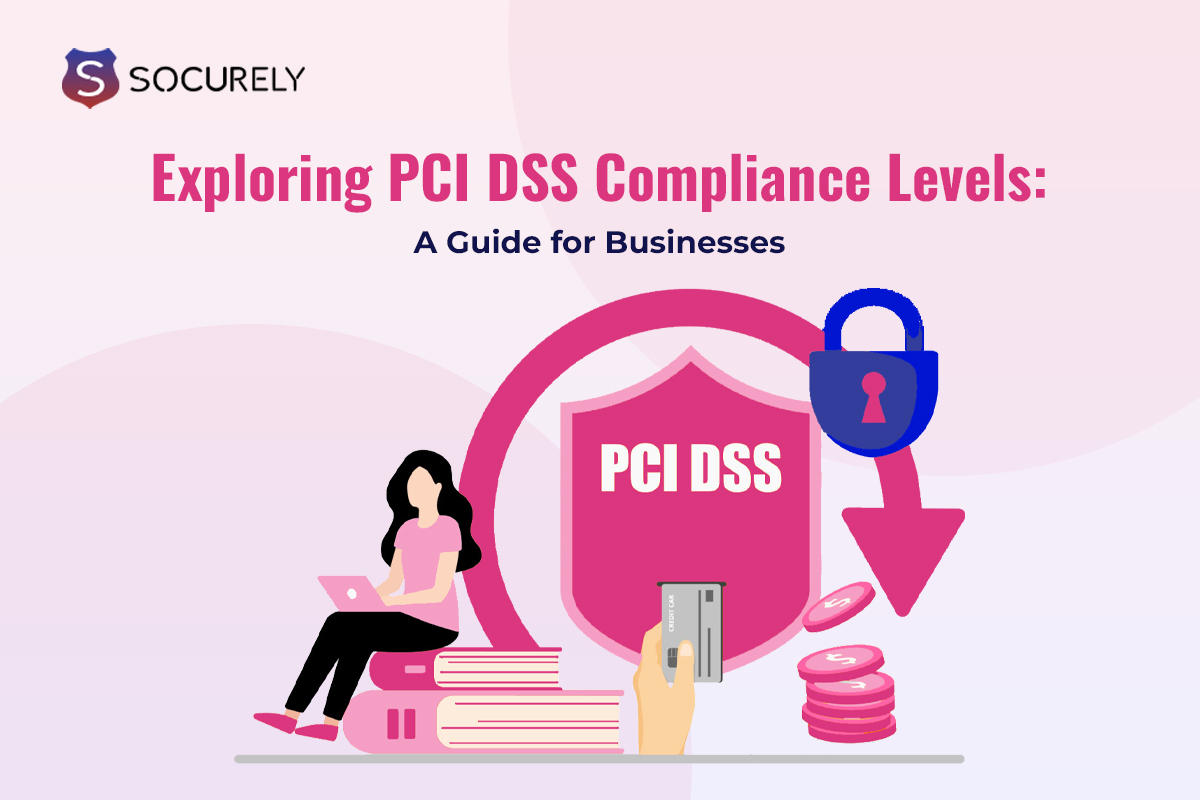
Securing customer data is paramount for businesses when it comes to surviving in the highly vulnerable digital transaction landscape. With 80% of customers favoring card payments, ensuring Payment Card Industry Data Security Standard (PCI DSS) compliance is non-negotiable. In this blog, we will delve into the four PCI DSS compliance levels, shedding light on the unique needs of each that will help you decipher the intricate world of PCI compliance.
In the PCI DSS compliance world, service providers and merchants adhere to distinct levels based on credit card transaction volume and cybersecurity incidents.
Service providers are categorized into Level 1 (processing over 300 thousand transactions, requiring a PCI Level 1 Audit) and Level 2 (processing fewer than 300 thousand transactions, utilizing the SAQ-D).
Merchants navigate four levels: Level 1 (over 6 million transactions, demanding an on-site audit), Level 2 (1 to 6 million transactions, requiring SAQ and scans), Level 3 (20,000 to 1 million transactions, emphasizing local guardianship), and Level 4 (less than 20,000 transactions, focusing on essentials without on-site audits).
Each level ensures tailored compliance, acknowledging the diverse risk landscapes of organizations.
PCI Level 1
For businesses processing over 6 million transactions annually, PCI Level 1 needs a robust security approach. The cornerstone of this level is an annual on-site audit conducted by either a Qualified Security Assessor (QSA) or an internal security assessor (ISA). This in-depth examination ensures a comprehensive understanding of the security controls in place.
Quarterly network scans, performed by approved vendors, serve as a proactive measure to identify vulnerabilities. Furthermore, an annual penetration test is mandatory, providing a thorough cybersecurity assessment. Businesses at this level must also submit an Attestation of Compliance (AOC) form, affirming their adherence to PCI DSS standards.
PCI Level 2
Applicable to businesses processing 1 to 6 million transactions annually, this PCI DSS compliance level strikes a balance between security and practicality. Unlike Level 1, there’s no requirement for an on-site audit. Instead, businesses can complete a Self-Assessment Questionnaire (SAQ), simplifying the compliance process.
Similar to Level 1, quarterly network scans by approved vendors remain obligatory. Additionally, an annual penetration test ensures a thorough examination of security measures. Submission of an Attestation of Compliance (AOC) is still required, providing a transparent overview of compliance efforts.
PCI Level 3
Designed for businesses handling 20,000 to 1 million transactions annually, PCI DSS Level 3 caters to local guardians of sensitive data. The compliance process at this level involves completing a Self-Assessment Questionnaire (SAQ) to evaluate security controls. While a quarterly network scan is mandatory, a penetration test, although not compulsory, is highly recommended for enhanced security.
Same as the higher levels, an Attestation of Compliance (AOC) must be submitted, offering a formal declaration of adherence to PCI DSS standards. This level emphasizes the importance of maintaining a secure environment without the mandatory penetration test.
PCI Level 4
Tailored for businesses processing less than 20,000 transactions annually, PCI DSS compliance Level 4 focuses on securing the essentials without overwhelming requirements. This level involves the completion of a Self-Assessment Questionnaire (SAQ) to assess and ensure compliance.
Quarterly network scans by approved vendors provide ongoing security monitoring. Unlike higher levels, there is no on-site audit or mandatory penetration test. However, businesses at this level are still required to submit an Attestation of Compliance (AOC) form, affirming their commitment to maintaining PCI DSS standards.
In summary, each PCI compliance level is meticulously crafted to suit the transaction volumes of businesses, providing a tiered approach that balances security needs with practicality. Understanding these levels empowers businesses to navigate the complex landscape of PCI DSS compliance with clarity and confidence.
Determining your PCI DSS compliance level is the crucial first step towards building a secure transaction environment. Level 1 demands a rigorous approach, while Level 4 provides a streamlined process. By aligning with your specific level, you optimize security efforts, ensuring a robust defense against potential threats.
The PCI Security Standards Council offers resources and tools essential for compliance:
Preparing for a PCI DSS audit can be challenging, but following these steps can simplify the process:
Get in touch with the experts at Socurely, if you are looking for comprehensive guidance on compliance monitoring. Get rid of the security compliance hassles with our experts’ help. By focusing on the key facts like regulation updates, automated evidence collection, real time monitoring we sure to give the best security to your business in the most effective way possible!
In a digital age where transactions thrive, PCI DSS compliance is not just a checkbox but a commitment to safeguarding customer data. By understanding and adhering to the specific requirements of your PCI compliance level, your business can navigate the complex landscape of digital transactions with confidence, ensuring a secure and trusted environment for both you and your customers.